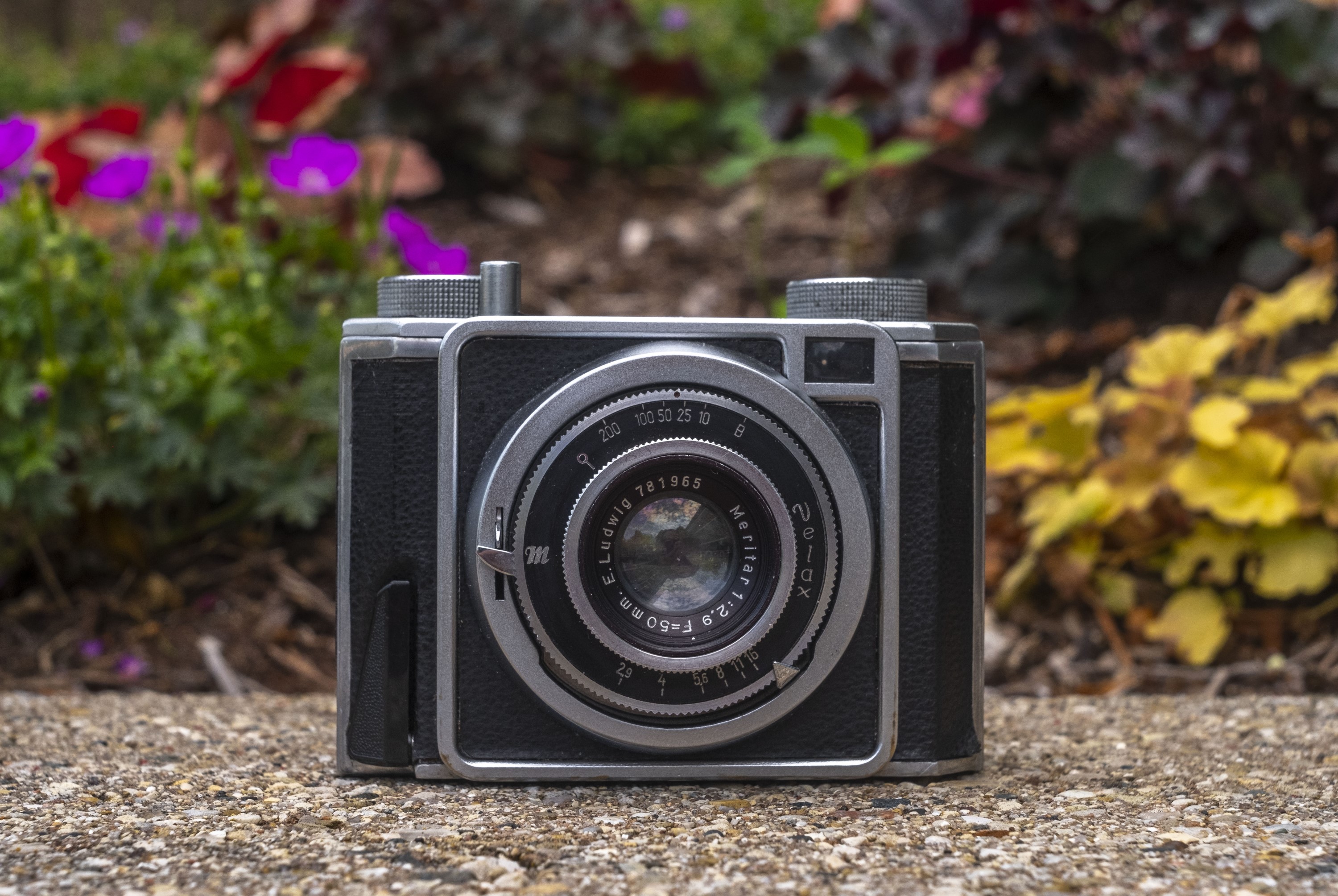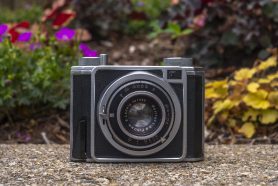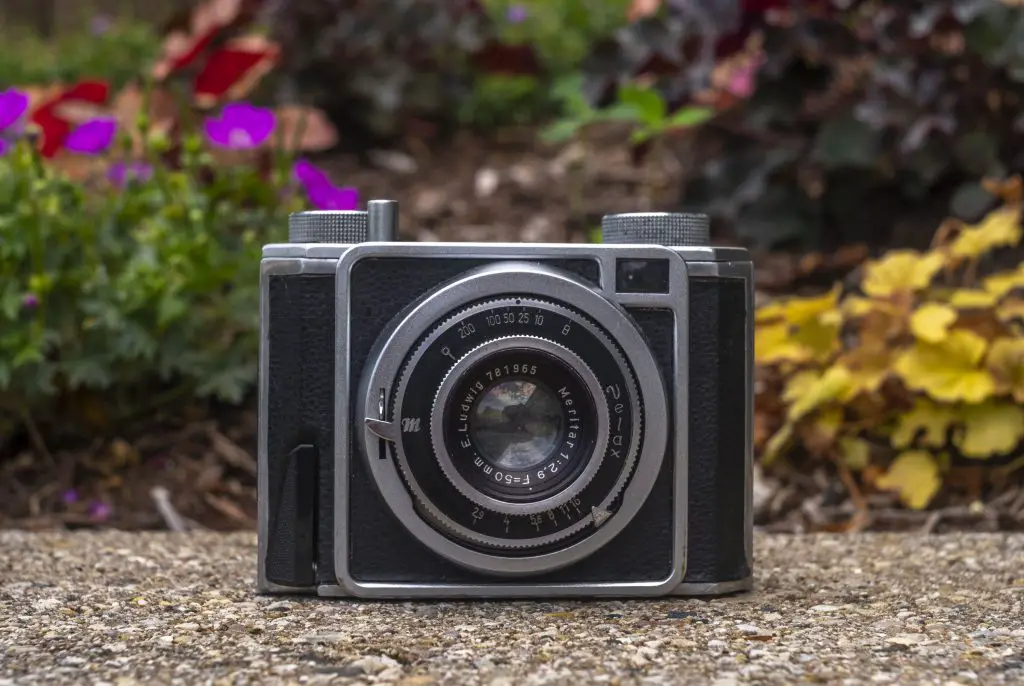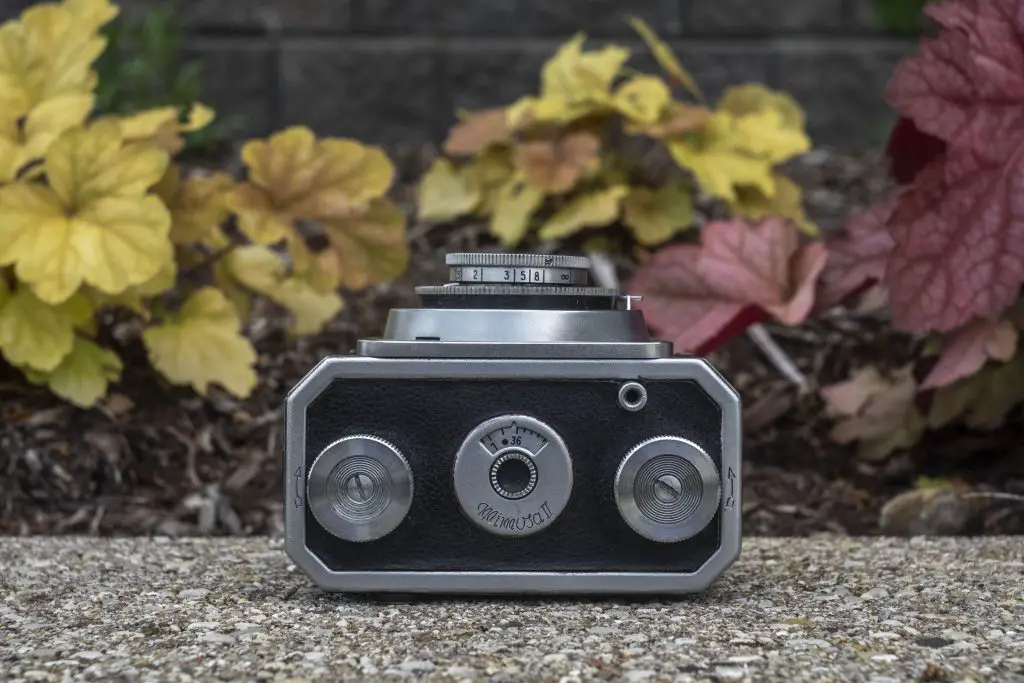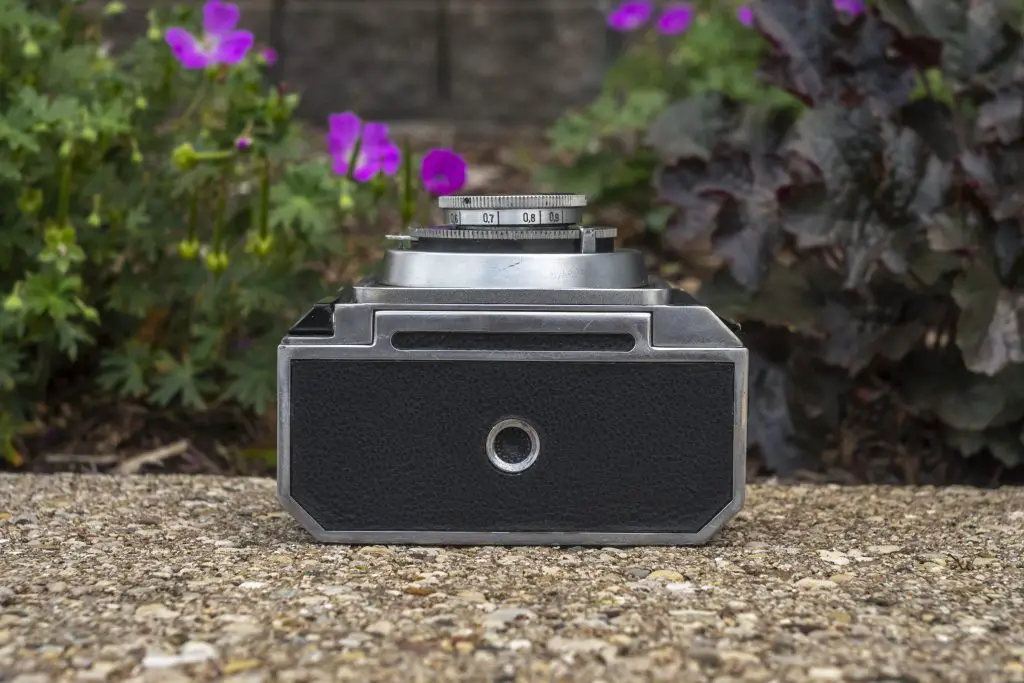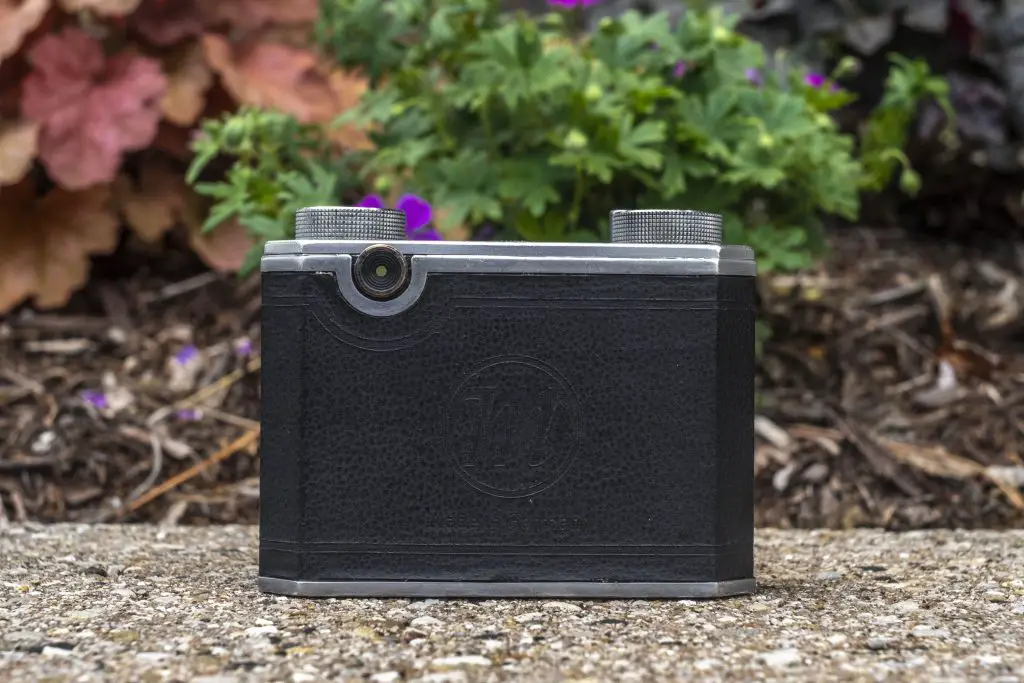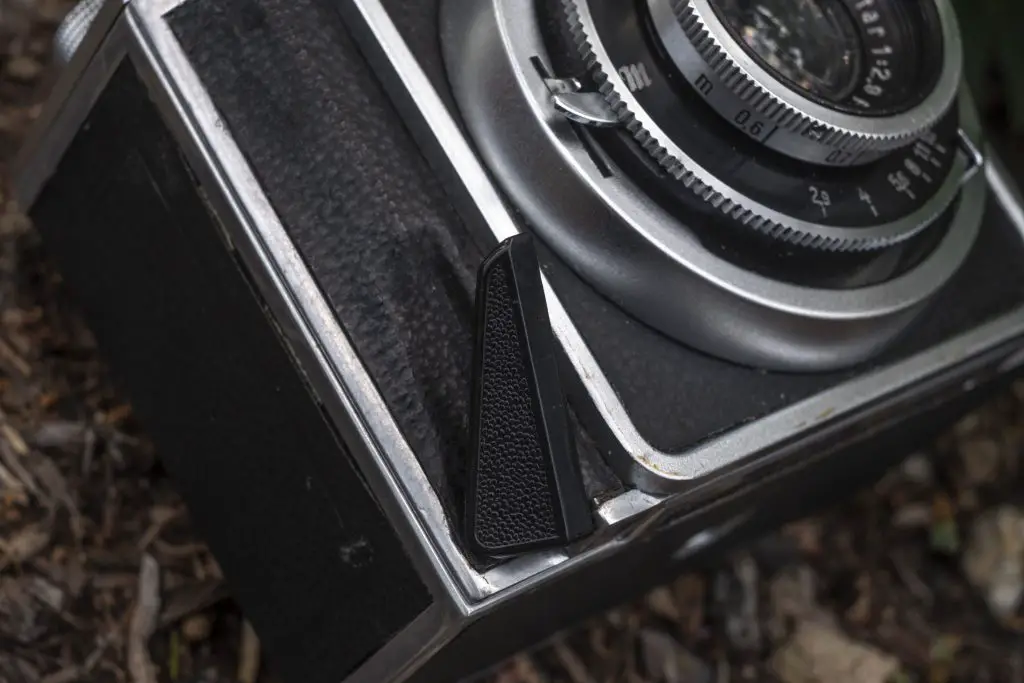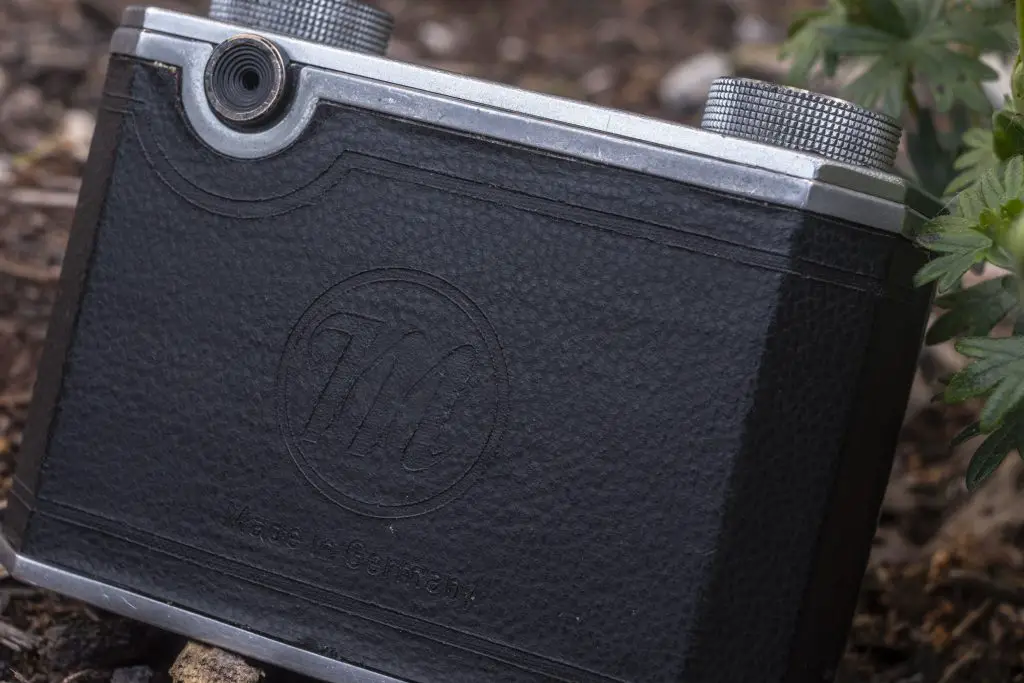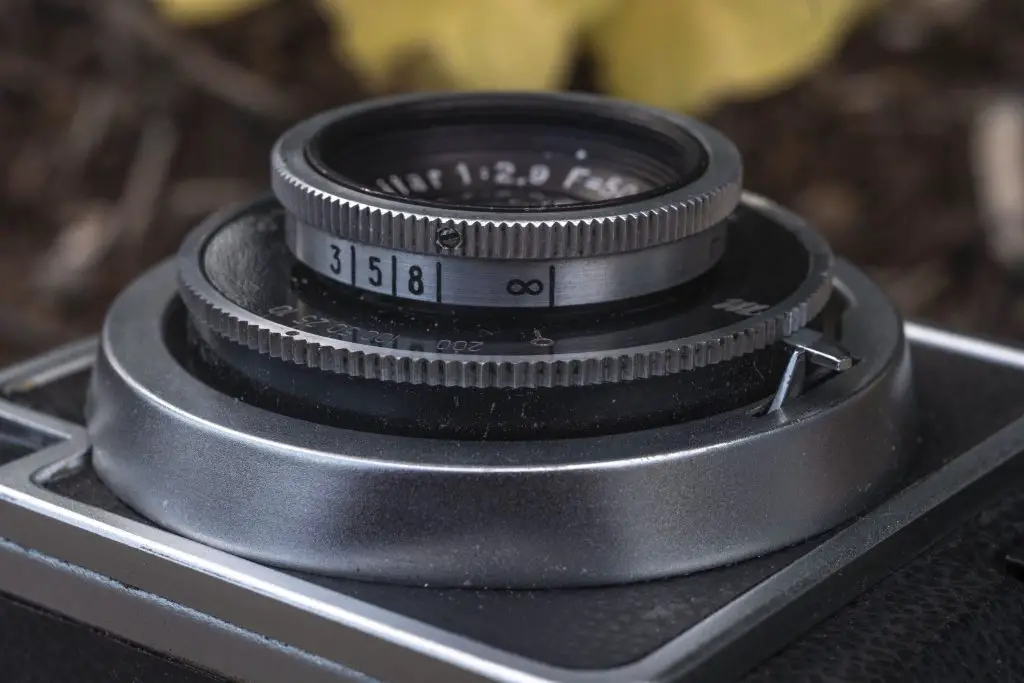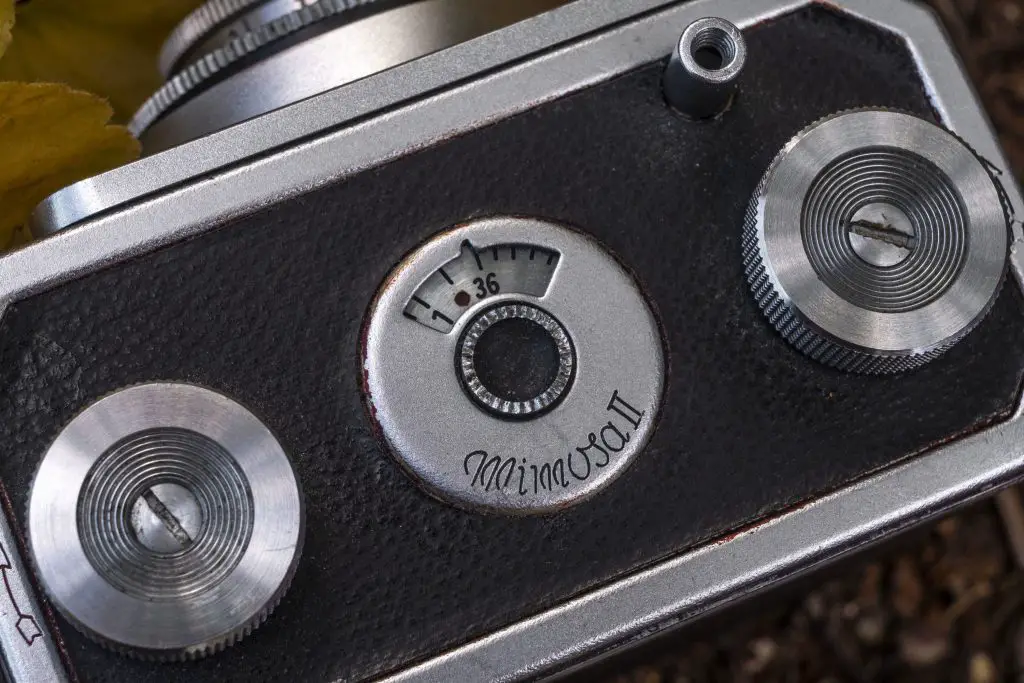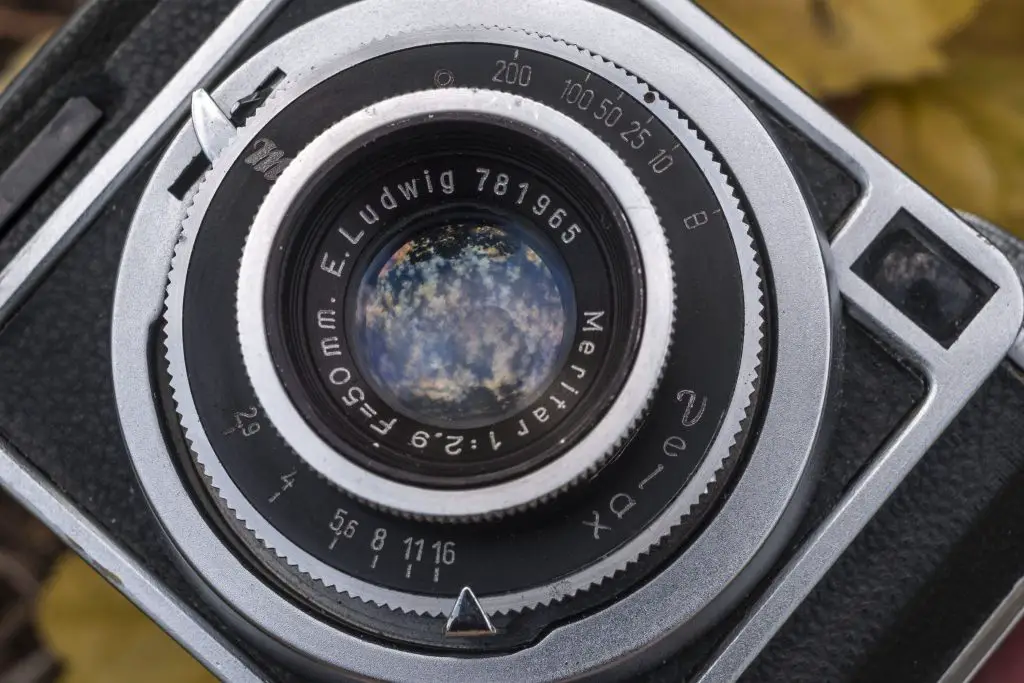 This review is part of the Cameras of the Dead series which I have been publishing every year on Halloween and “Halfway to” Halloween, featuring three cameras that I’ve wanted to review that either didn’t work, or was otherwise unable to shoot.
This review is part of the Cameras of the Dead series which I have been publishing every year on Halloween and “Halfway to” Halloween, featuring three cameras that I’ve wanted to review that either didn’t work, or was otherwise unable to shoot.
I am republishing each of those individual reviews this October in anticipation of this Halloween’s Cameras of the Dead post as a way to revisit the cameras of the past that allows them to be properly indexed on the site.
This is Mimosa II, a 35mm scale focus camera, produced by VEB Mimosa Dresden starting in 1949. It was the follow up to the original Mimosa, replacing the flip up metal viewfinder with a through the body optical viewfinder. Although resembling a box camera, the Mimosa is a quite compact 35mm camera that came with a variety of East German leaf shutters and lenses. The camera is notable mostly for it’s cube-like appearance, as it was quite a simple model. The Mimosa I and II were the only two cameras produced by it’s parent company, as in 1950 the company was absorbed into VEB Zeiss-Ikon.
Film Type: 135 (35mm)
Lens: 50mm f/2.9 E. Ludwig Meritar uncoated 3-elements
Focus: Fixed Focus ~2m to Infinity
Viewfinder: Optical Scale Focus
Shutter: Velax Leaf
Speeds: B, 1/10 – 1/200 seconds
Exposure Meter: None
Battery: None
Flash Mount: None
Weight: 415 grams
Manual: None
My Thoughts
 Who doesn’t like Mimosas?! A tasty alcoholic beverage consisting primarily of champagne and nutritious orange juice sounds like an excellent way to start every day.
Who doesn’t like Mimosas?! A tasty alcoholic beverage consisting primarily of champagne and nutritious orange juice sounds like an excellent way to start every day.
Oh wait, this isn’t that kind of Mimosa. Still, the Mimosa II is a distinct looking camera that once you see it, you’ll likely never forget it as there aren’t many other cameras like it. Speaking of how it looks, one thing that is not immediately apparent until after you see one in person, is how small they are. It’s cube-like appearance suggests something along the size of a Kodak Brownie box camera, but the Mimosa is quite a bit smaller than that.
The Mimosa was a minimalist camera built by a small East German company who was more famous for producing photographic paper and film than cameras, and it’s simplicity shows in it’s design, but not without a few surprises.
The first, is that despite it’s compact size, it shoots full size 24mm x 36mm images. In order to fit an entire 35mm film compartment into a camera with such a small body, some compromises were made. The most significant is that both compartments where a roll of film and the take up spool go, are wrapped around towards the front of the camera. This is likely why despite it’s small size, the Mimosa is quite deep front to back.
The top plate has both the rewind and advance knobs which flank the central exposure counter. On the earlier Mimosa I, there is flip up metal viewfinder with an exposure counter in it’s center, but is otherwise the same camera. In front of the film advance knob is a cable threaded shutter release.
The bottom of the camera features only the 3/8″ tripod socket and nothing else.
When it’s time to load film into the camera, you need to open the film compartment, which requires pulling down on a strange looking triangular lever on the camera’s front corner. Like other East German 35mm cameras such as the Altissa Altix, there is no pressure plate on the back, rather it is hinged and attached to the main body, so you must fold it out of the way when installing new film. It is a bit awkward and I found it works best to have the camera upside down on a flat surface while loading film, but otherwise is uneventful.
Film transport is from left to right onto a single slot, hinged take up spool. In order to secure the supply cassette on the left, there is a hinged metal arm that is spring tensioned that you must pull down on while inserting the cassette. With the cassette installed, the metal arm provides tension on the cassette to keep it in position.
Like most East German cameras, the Mimosa came with a variety of West German Compur or Prontor copies and simple 3 element lenses. This one has a four speed Velax shutter and an E. Ludwig Meritar 50mm f/2.9 lens. The specs of this lens closely match that of the Schneider Radionar triplet, but I am uncertain if it is a copy of that lens.
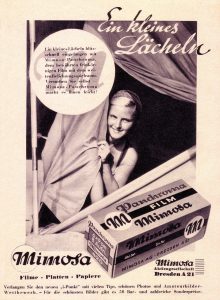
Focus is done by rotating the entire front element, and distance markings are in meters. This particular Mimosa was missing it’s infinity stop, so I struggled with accurate focus while shooting it. Most likely this was lost during some previous repair.
The viewfinder is extremely small and impossible to see the whole frame through while wearing prescription glasses. I don’t understand why the Mimosa II was updated from the original with such a small viewfinder when the trend at the time was making larger viewfinders. The Mimosa is smaller in person than it looks in pictures, but it’s thick depth means it won’t easily fit in a pocket like a scale focus folding camera of the era might. The simple lens and shutter is certainly capable of decent images, but again, nothing special.
The Mimosa II is a neat little camera and has a look unlike any other camera out there, but this is one that even if it was in good working order, I doubt I would use it much. The strange ergonomics do not seem to serve any purpose. If the idea was to make a camera as small as possible, you could forgive some usability issues, whatever space was saved in the camera’s width, is lost in how thick it is, making a less than pocketable camera.
My Results
In all previous editions of the Cameras of the Dead series, I share with you cameras that I was unable to use, but this time I have a couple sample pics to share, even if they’re not very good. This Mimosa II actually did kind of work, but because of a missing infinity stop, it was impossible to accurately measure focus. I also suspect the shutter was dragging as every shot I got from a test roll of Arista.EDU 100 film came out over exposed. With these issues and a shooting experience that was less than pleasurable, I didn’t want to take the time to try and fix the camera for another go.
I don’t know that there’s much of a conclusion that can be drawn from these images as they’re out of focus and overexposed. I am certain that when found in good working order, the Mimosa is capable of decent, but probably unremarkable images. Should a Mimosa II be added to your collection? As a display, yeah, they’re pretty neat, but as a user, even if it works, maybe not so much.
Related Posts You Might Enjoy
External Links
http://camera-wiki.org/wiki/Mimosa_(35mm)
https://www.collection-appareils.fr/x/html/camera-10060-Mimosa_Mimosa%20II.html
https://flashbackcamera.jp/other/body-18/015450-mimosa-ii.html

